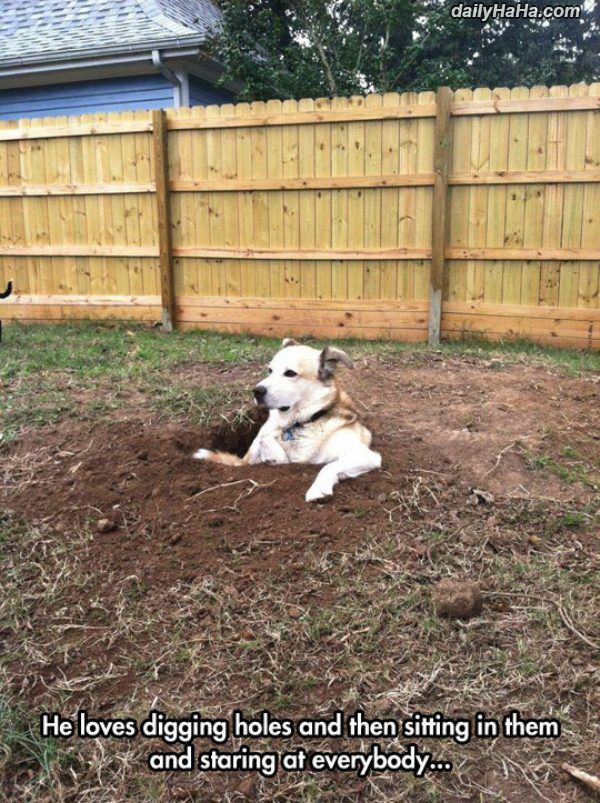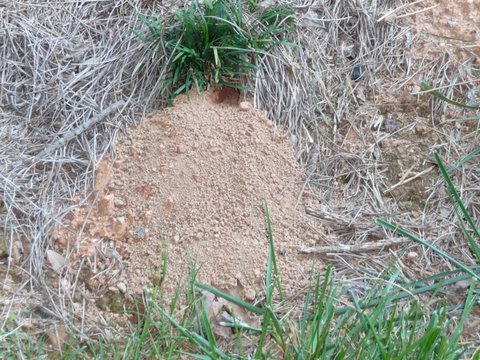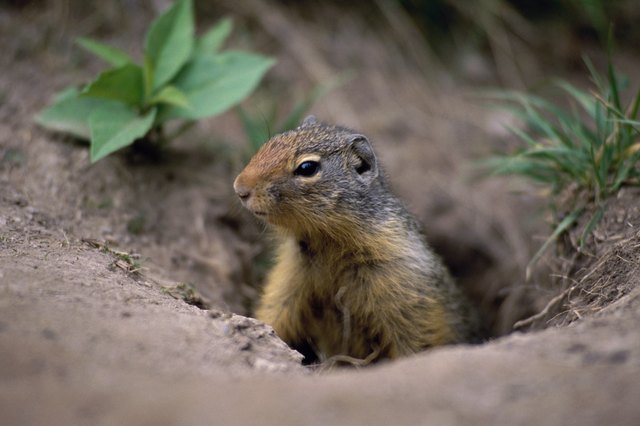This time, we’re going to talk about What Animal Digs Holes In The Yard. There is a lot of information about Animal Digging In Yard on the internet, of course. Social media are getting better and better quickly, which makes it easier for us to learn new things.
What To Do About Raccoons Digging Holes In your yard and Pictures Of Animal Holes In Yard are also linked to information about What Animals Are Digging In Your Yard?. As for other things that need to be looked up, they are about what animal makes holes in the garden and have something to do with What Animal Digs Holes In Yard At Night.

34 Unexpected Facts About What Animal Digs Holes In The Yard | What is digging burrows in my garden?
- Post winter, roots from trees may fail and cause cave ins. Diverted streams or other underground water can create holes. When you turn on your sprinkler system in spring, you may find a pipe has sprung a leak and will cause a boggy fissure. - Source: Internet
- If you are experiencing holes in your yard, there is a variety of things that could be causing them. Animals, children at play, rotten roots, flooding and irrigation problems are the usual suspects. Small holes in yards are generally from insects, invertebrates or burrowing rodents. Larger holes have more catastrophic causes as a rule, and the origin must be discovered and the issue repaired. Use a sleuthing process to answer, “What is digging holes in my yard?” Then learn about identifying holes and fixing the problem. - Source: Internet
- Putting a fence around your home is a cost-effective way that can keep out pests. Mesh fencing is the best option for homeowners. If the mesh does not work, adding chicken wire around the fence will provide more deterrence. Any fencing used to exclude digging or burrowing animals should be buried at least 10 inches into the ground to discourage the animal from digging under the fence. This will make it nearly impossible for animals to get through. - Source: Internet
- Use deterrents. This is a more costly and labor-intensive option. These can include physical barriers, natural or chemical deterrents, and devices set up to frighten unwanted animals. - Source: Internet
- About Me Hi, I’m Trev and I’ve been growing things since I can remember. When I was younger, I grew up on a farm, so I have always been around plants and animals. After studying horticulture at university, I decided to start my own nursery which I have run now for 25 years. In my spare time, I run this website – which is a resource for people who want to learn more about their gardens. - Source: Internet
- Wet or boggy soils may be the home of crawfish, which leave 2- to 4-inch (5-10 cm.) tall mud towers with a broad hole at the top. If you want them off your property, trapping or professional animal control services are likely your best option. - Source: Internet
- Snakes are easily some of the most disliked lawn pests on this list. Contrary to popular belief, snakes cannot create their own burrows. Instead, they must repurpose abandoned larger holes that provide shelter from the elements. - Source: Internet
- Why are there new holes in my yard? There are a few possible reasons why there are small holes in your yard: from insect infestations such as wasps and beetles; wildlife animals like squirrels, rabbits, and chipmunks; and rodents and pests such as voles and moles. Both insects and vertebrate yard pests create holes in your yard that disfigure or kill off grasses surrounding the remaining lawn. As you will soon discover, eliminating them completely begins with proper identification of the problem. - Source: Internet
- In the fall and all during the growing season, skunks are on the patrol for earthworms, grubs and a variety of soil insects. Their diets also include crayfish, small animals, birds and their eggs, frogs and turtle eggs – if they can find them. Skunks enjoy a diet that extends into fallen fruit like mulberries, raspberries, cherries and grapes. They don’t jump and cannot climb to any extent, so they work close to the ground. - Source: Internet
- Moles leave piles of soil on the surface because they are pushing them up from below. There are no visible holes. In warm weather, the star-nosed mole works about 6 inches or more below the surface and periodically pushes soil up to make an air vent. At the same time, the eastern mole is tunneling just below the surface and you can walk on its created trail. - Source: Internet
- https://nationalzoo.si.edu/animals/black-tailed-prairie-dog (habitat, behavior, lots of info) - Source: Internet
- Homeowners often find evidence of animals digging in their yards. Squirrels, chipmunks, armadillos and moles are often the culprits. An Alabama Extension wildlife specialist offered tips on controlling these animals from destroying yards. - Source: Internet
- Once these obvious causes have been eliminated, it’s time to focus on site. If the problem isn’t holes throughout the lawn, but holes in the soil or garden, there are other possibilities. Wild animal activities create holes in the garden. Birds, squirrels and other animals dig in soil looking for insects or food they previously buried. Animals also burrow into soil and nest underground. - Source: Internet
- Animals require food, water, and shelter for survival. They’re hungry for worms, insects, and grubs in your yard, and they’re thirsty for the water that has collected in the bird bath out back. Consider how to manage these resources in order to manage the animals digging. - Source: Internet
- Chipmunks are known for digging holes that allow them to take refuge from predators during the day. Because these creatures create a network of narrow tunnels around the property, it’s best to eliminate them as soon as possible. Use ‘L’ shaped tunnel barriers to reduce their activity, and replace your landscaping with heavy gravel. - Source: Internet
- Another animal troubling to landscapes is the mole. Moles dig tunnels through yards in search of food. These tunnels form ridges in the soil. Moles have an enormous appetites and may eat up to 100 percent of their body weight in a single day. - Source: Internet
- Some wasps and other insects lay eggs in sod, which produces holes. It might be beneficial to excavate small holes in yards to see if there are eggs or if there is a tunnel. This will provide you with more information so you can decide what approach to take next. - Source: Internet
- Earthworms are most active in spring and when soils are moist. They leave a granular tower of soil around their 1-inch (2.5 cm.) holes. Many other insects lay their eggs in soil and the larvae hatch in spring, leaving pinprick sized holes. - Source: Internet
- Build an underground fence using wire mesh and hardware cloth to block tunneling animals. Dig a trench at least two feet deep, bend the bottom of a hardware cloth to create a flat, six-inch surface at the base of your fence, and insert the fence into your trench so that the flat edge is facing away from your garden. Ensure that the fence extends about 12 inches above ground, and then refill your trench with soil. - Source: Internet
- Examine tracks, burrows, or nests. This is also a great way to identify digging or burrowing animals. The presence of tracks leading to a burrow, the shape of the burrow’s entrance, and nearby odor can all help differentiate between the diggers. - Source: Internet
- Modify the habitat that your unwanted animals have taken over. This can be the cheapest and most effective long-term solution. By removing their sources of food, water, and shelter from your yard, you eliminate their incentive to stay. They will quickly move on to find other resources. - Source: Internet
- Trap the offenders. This is an effective way to get rid of unwanted animals but can also be tricky as it is legally restricted in many cases. It is also considered a short-term fix, as other animals of the same species will seek out your yard if you don’t remove the resources that they are looking for. The safest option is to hire a professional trapping service. - Source: Internet
- Some birds will dig holes in the garden, not usually to find food but rather to hide it. Jays and crows in particular will hide nuts in small holes to save for the winter. However when winter comes, they may not have the best memory and will make many small holes trying to find where they hid their stash. The bird holes in the spring, summer and fall will be covered up by the bird. In the winter, they will leave the holes open. - Source: Internet
- Damage from an armadillo is fairly distinctive. When on the hunt, the armadillo uses its long, sharp claws to break the surface of loose soil. In the process, it leaves holes averaging 3 inches wide by 5 inches deep. - Source: Internet
- “Once you know which animal is causing the problem, it will be easier to come up with a solution,” he said. “There are several ways to get rid of pests, but not every method will work for every pest.” - Source: Internet
- Another factor to consider is the time of the year as different seasons will mean that different animals are active, some of them may be laying eggs while others may be looking for something to eat. Mysterious Holes in Lawn at Night? … Please enable JavaScript Mysterious Holes in Lawn at Night? Here’s what you need to know! - Source: Internet
- Rhubarb is another snack for raccoons to munch on. Though pests occasionally choose to eat rhubarb when other food sources are scarce. In response to growing fresh fruits and vegetables in your yard, raccoons dig holes in your yard to retrieve them from the root up and to search for other goodies that may lay under the grass. - Source: Internet
- The home gardener seeking to find out what is digging holes in my yard may have to cast an eye to pets or children. This may seem obvious, but if you have a roving pooch in the neighborhood, it might be a digger. Children also find it fun to make tunnels and fort in dirt, which often requires excavation. - Source: Internet
- The difference between raccoon burrows and other burrows is the time they are created. Most animals dig during the day while raccoons prefer the night. Additionally, raccoon burrows are commonly surrounded by large, ripped chunks of sod and grass that are scattered about messily. - Source: Internet
- Large holes, 6 to 12 inches in diameter, accompanied by a large mound of sandy soil, could belong to a gopher tortoise. These animals, and their burrows, are protected by state law. The Florida Fish and Wildlife Conservation Commission provides a great application for reporting sightings. - Source: Internet
- Areas near tree snags and roots that have holes could be the burrows of rats or chipmunks. Larger holes may host armadillos or even groundhogs, which leave holes a foot across. Watch in the early morning and evening for signs of these animals. - Source: Internet
- Small holes keep popping up in your lawn. In your vegetable garden, too. You’ve got a pest problem and need to stop these critters from gnawing your landscape down to a moonscape. Luckily for you, we’ve gathered all the information you’ll need to identify your diggers and stop them from tearing up your yard. - Source: Internet
- Products for control also can be purchased at local gardening stores. They range from poisons to deterrents. This could be a beneficial solution if the yard is small and there are no domestic animals around. Using this option on large yards could be expensive, however. - Source: Internet
- Fencing stakes, heavy wire mesh, and cable ties can be used for short-term vegetable and flower gardens. Simply lay wire mesh over the entire garden area before planting and lay topsoil over it. Secure the mesh by placing fencing stakes around the perimeter, or a border of heavy rocks. Then, when sowing your garden, plant between the mesh holes. - Source: Internet

Here are a few tips to help you find information about What Animals Are Digging In Your Yard?:
- Look for good places to get information about How to Stop Animals from Digging in Your Yard. This can be done in libraries, on websites, or even by paid journalists.
- When looking for information about what animal makes holes in the garden, it’s important to know that there are different kinds of online sources, like Google and YouTube. Social media sites like Facebook and Twitter are also good places to look for information about Animal That Digs Underground.
Video | What Animal Digs Holes In The Yard
To get the best information about What is Digging Holes in my Lawn at Night UK?, you should read to find out how true each source is.
This article has a few videos from different places about Rat Holes In Yard that will help you learn more about it. The Internet is a great place to find out about a wide range of things.
## Here are some crucial aspects concerning Pictures Of Animal Holes In Yard:- What Animal Digs Holes In The Yard
- What Animal Digs Holes In The Yard At Night
- What Animal Digs Holes In The Lawn
- What Animal Makes Holes In The Garden
- What Animal Is Digging Holes In Yard

With so many websites and forums that talk about Lawn And Garden Holes: What Is Digging Holes In My Yard?, it shouldn’t be hard to find what you need.
Most people are used to getting information about Animals That Dig Holes In Your Yard in a very different way than this. It lets you look at the information about How to Stop Animals from Digging in Your Yard and how it can be used in more detail.
 ways to put information about what animal is digging holes in my yard florida in a way that looks good and is useful. They can be used in business and marketing, and they can also be used to talk about what animal digs holes in the yard at night. So, we also give you some pictures about what animal digs small holes in the yard.
ways to put information about what animal is digging holes in my yard florida in a way that looks good and is useful. They can be used in business and marketing, and they can also be used to talk about what animal digs holes in the yard at night. So, we also give you some pictures about what animal digs small holes in the yard.
In the end, this article gives a summary of Holes In Lawn Overnight. Also talked about are Pictures Of Animal Holes In Yard and Animal Digging Tunnels Yard, which you can use to compare how much you know about Animals That Dig Holes In The Ground.